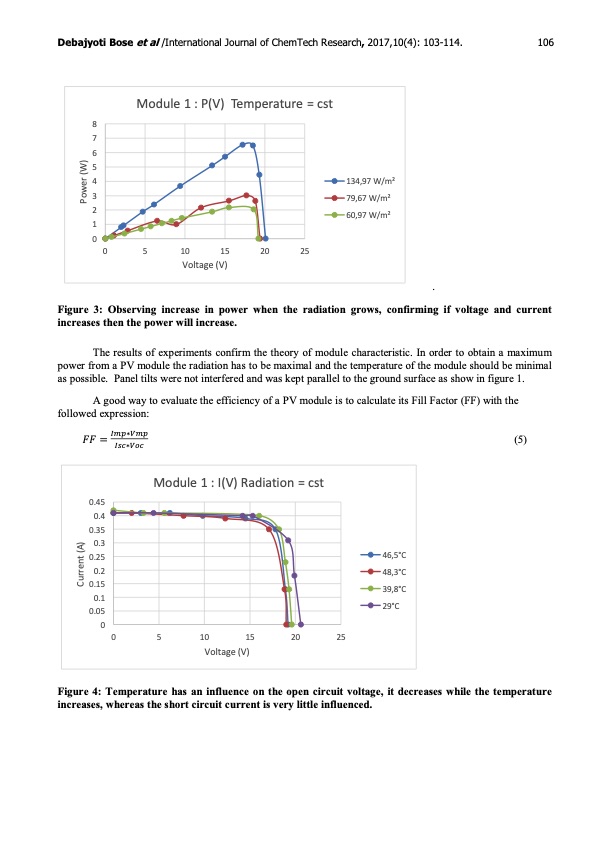
PDF Publication Title:
Text from PDF Page: 004
Debajyoti Bose et al /International Journal of ChemTech Research, 2017,10(4): 103-114. 106 8 7 6 5 4 3 2 1 0 134,97 W/m2 79,67 W/m2 60,97 W/m2 Module 1 : P(V) Temperature = cst 0 5 10 15 20 25 Voltage (V) Power (W) . Figure 3: Observing increase in power when the radiation grows, confirming if voltage and current increases then the power will increase. The results of experiments confirm the theory of module characteristic. In order to obtain a maximum power from a PV module the radiation has to be maximal and the temperature of the module should be minimal as possible. Panel tilts were not interfered and was kept parallel to the ground surface as show in figure 1. A good way to evaluate the efficiency of a PV module is to calculate its Fill Factor (FF) with the followed expression: (5) 0.45 0.4 0.35 0.3 0.25 0.2 0.15 0.1 0.05 0 46,5°C 48,3°C 39,8°C 29°C Module 1 : I(V) Radiation = cst 0 5 10 15 20 25 Voltage (V) Current (A) Figure 4: Temperature has an influence on the open circuit voltage, it decreases while the temperature increases, whereas the short circuit current is very little influenced.PDF Image | Renewable Electrolysis using Graphene electrodes

PDF Search Title:
Renewable Electrolysis using Graphene electrodesOriginal File Name Searched:
V10N4CT.pdfDIY PDF Search: Google It | Yahoo | Bing
Salgenx Redox Flow Battery Technology: Power up your energy storage game with Salgenx Salt Water Battery. With its advanced technology, the flow battery provides reliable, scalable, and sustainable energy storage for utility-scale projects. Upgrade to a Salgenx flow battery today and take control of your energy future.
| CONTACT TEL: 608-238-6001 Email: greg@infinityturbine.com | RSS | AMP |